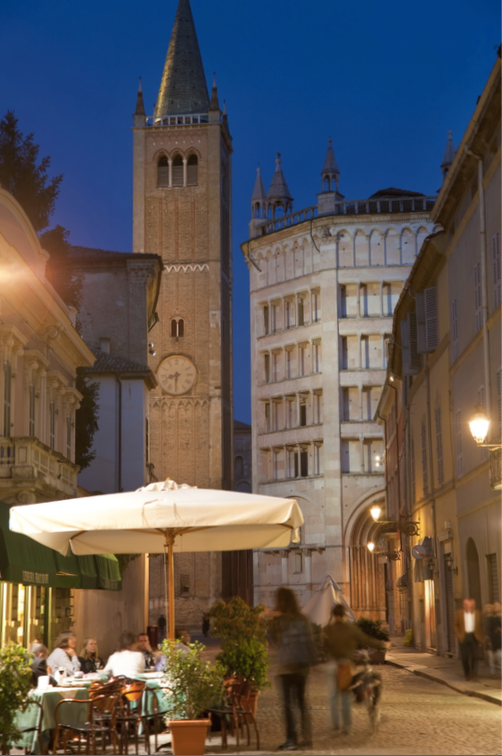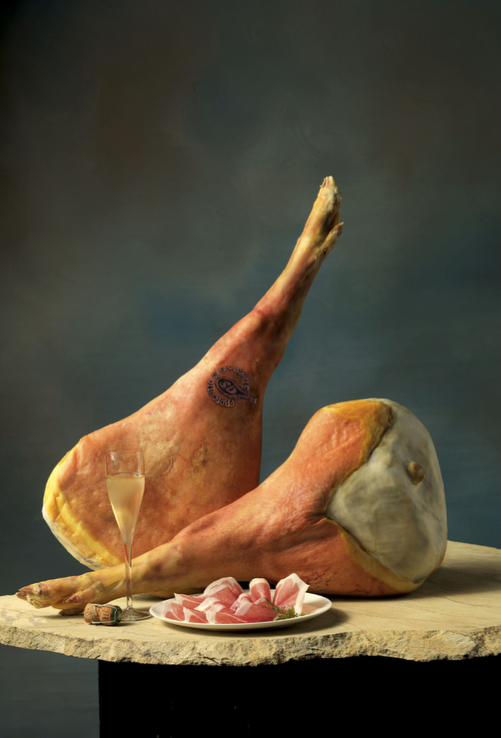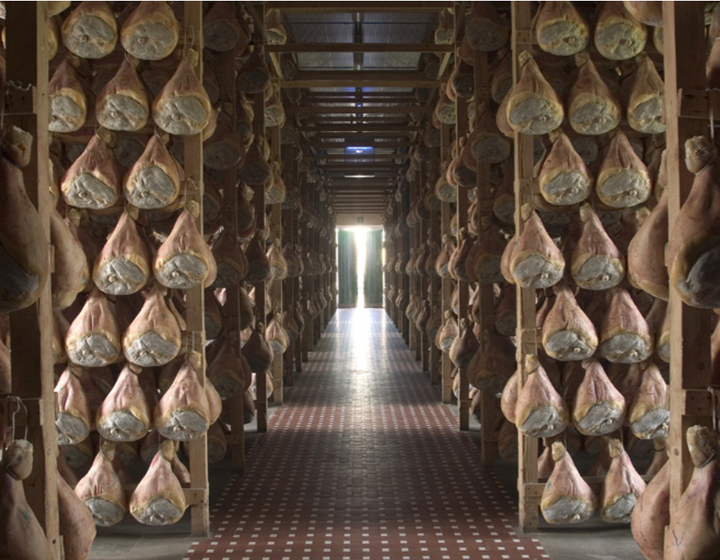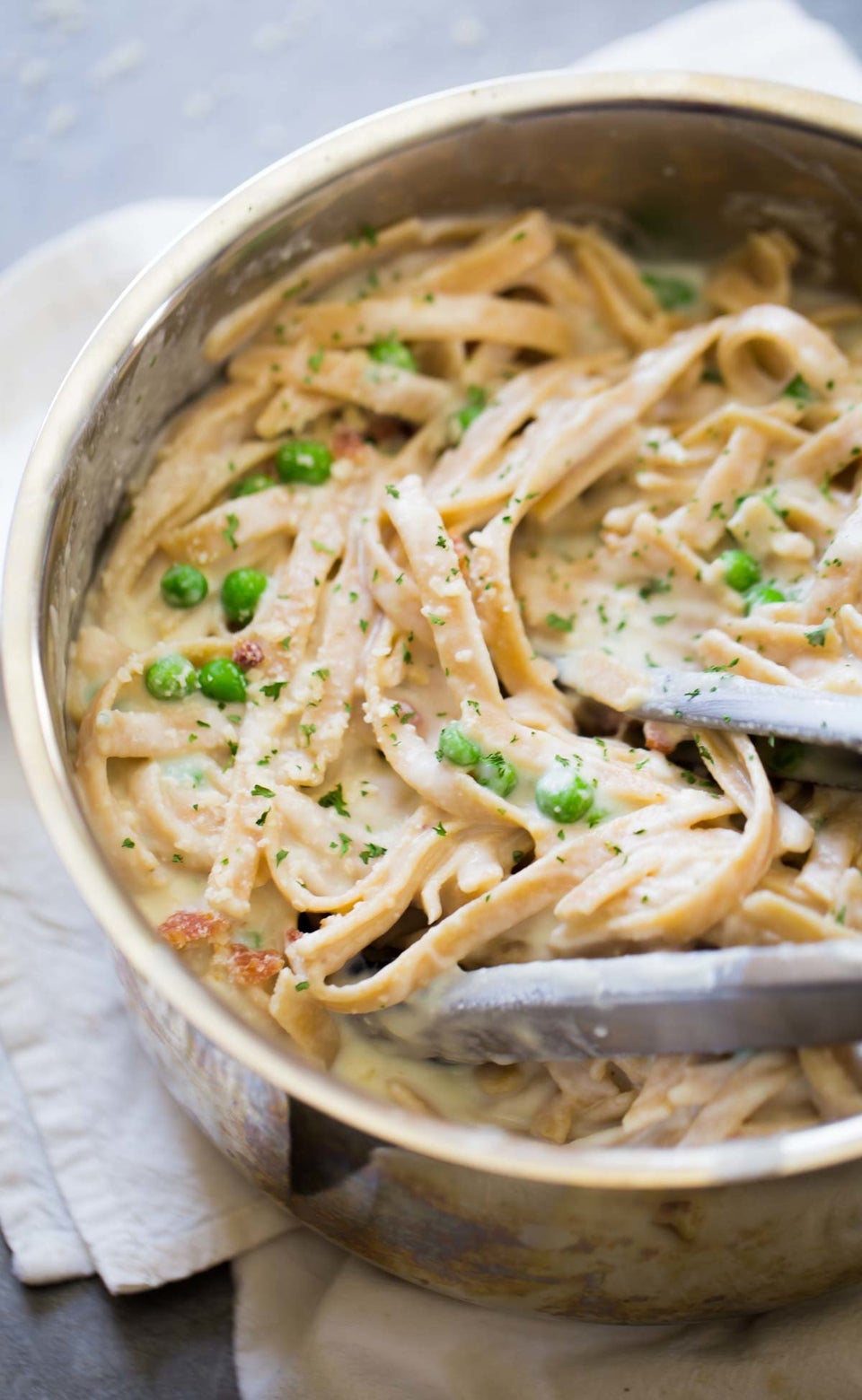
There’s Parma ham and then there’s San Daniele: both are delicious and widely loved in Italy and abroad. They look alike yet are very different. Here’s what you need to know to tell them apart. Both are PDO products (protected designation of origin, meaning that they are tied to a specific geographical area with unique environmental characteristics), and they must follow a specific law that, in addition to regulating all the workmanship phases, also bans the use of chemicals, additives and preservatives.
And then there’s the obvious but fundamental difference of the region where they’re produced. For San Daniele PDO it’s the municipality of San Daniele, province of Udine, in the region of Friuli Venezia Giulia, in an area of 13.5 square miles. The consortium has 31 member companies. For Parma ham, the region is Emilia Romagna, and the area is limited to the territory of the province of Parma south of Via Emilia (at least 3.1 miles away) up to an altitude of nearly 3,000 feet, bounded on the east by the Enza River and on the west by the Stirone torrent. It has 150 member companies. The differences? Here’s what you can see with the naked eye.

1. The shape: San Daniele is typically flattened to a guitar shape due to pressing (part of the workmanship process), while Parma ham is round, like a chicken thigh.
2. The branding, with the symbol of a trotter for San Daniele and a five-point crown for Parma.
3. The leg: short and without the foot for Prosciutto di Parma, while the trotter is present on San Daniele.
The challenge involves defining which tastes “sweeter.” This is hard to say, because a lot depends on curing, which apart from the mandatory minimum, can be extended to give the prosciutto more flavor. But the average nutritional values published by the Istituto Nazionale di Ricerca per gli Alimenti e la Nutrizione—Italy’s research institute for food and nutrition—tells us a lot, because per 100 grams (3.5 oz) of ham, Prosciutto di Parma contains 0.155 ounces of salt and San Daniele 0.158.
Here are the details about what makes them different.

INGREDIENTS
Both come from pigs born and raised in ten regions of central and northern Italy. They are fed with high-quality food such as corn, barley and whey made from the production of Parmigiano-Reggiano cheese for Parma ham. For San Daniele noble grains and milk whey are used. An Italian pig is heavy and is distinguished by mature, compact and savory meat. In essence, the main ingredient is the same, but the difference in taste depends on the animal feed that is used. San Daniele thighs must weigh at least 26.4 pounds, while Parma thighs weigh between 26.4 and 30.8 pounds, and never less than 22.
SALTING
This is done with sea salt, both moist and dry, and takes as many days as the thigh’s weight in kilograms (for San Daniele, a 15-kg thigh takes 15 days, for Parma between 21 and 25 days), divided into two phases (first salting and second salting). After the salting, San Daniele prosciutto is pressed and, in addition to giving it the characteristic guitar shape, this also allows the salt to penetrate deeper during the subsequent curing phase.

CURING
This means drying, for a minimum of 12 months for Parma and 13 for San Daniele. By law, this must be done in the established production area so it can “acquire” the aromas of the local area, specific to each climate and environment responsible for each typical flavor.
THE AIR
The breeze dries the prosciutto and this is what magically gives each one its distinctive flavor. Here we can cite the respective consortia. For Parma: the sea air of Versilia acquires the aroma of pine groves and then goes through the karstic mountains of Cisa, losing its brackishness. Then it blows through scented chestnut groves and loses moisture, making it ideal for aging prosciutto. For San Daniele: the town is in the “Morainic Amphitheater” at the beginning of the Prealps, 825 feet above sea level. Here the cold, dry winds descending from the Carnic Alps encounter the warm, salt air of the Adriatic, and the Tagliamento River bathing the hillsides serves as a natural temperature regulator.

SHAPE
When the fat and rind are removed at the beginning of the process, Parma ham acquires its typical roundish “chicken- thigh” shape. Due to pressing at the end of the salting phase, San Daniele instead acquires a “guitar” shape that is accentuated by the presence of the trotter (the leg of Parma hams is short). In addition to making San Daniele ham immediately recognizable (unsliced, obviously) this serves a specific purpose: it allows moisture to emerge during curing and lets the salt penetrate the thigh. The outcome? The trotter is unquestionably the sweetest part of the prosciutto.
SEAL
For Parma, the five-point or ducal star is fire-branded at the end of the workmanship process, once all quality tests have been passed. In fact, the name of the individual producer can be seen under the oval with the “Parma” seal. In all phases (from breeder to curing) special symbols are added to make each ham completely traceable. The symbol of San Daniele PDO is the thigh with a stylized foot encircled by the words “Prosciutto di San Daniele.” FLAVOR
For San Daniele: The aroma is delicate but becomes more persistent with curing. Toasted nuances (bread crusts), nuts and barley malt can be noted. For Parma: delicate and sweet flavors, not salty, and with a fragrant and typical aroma.


